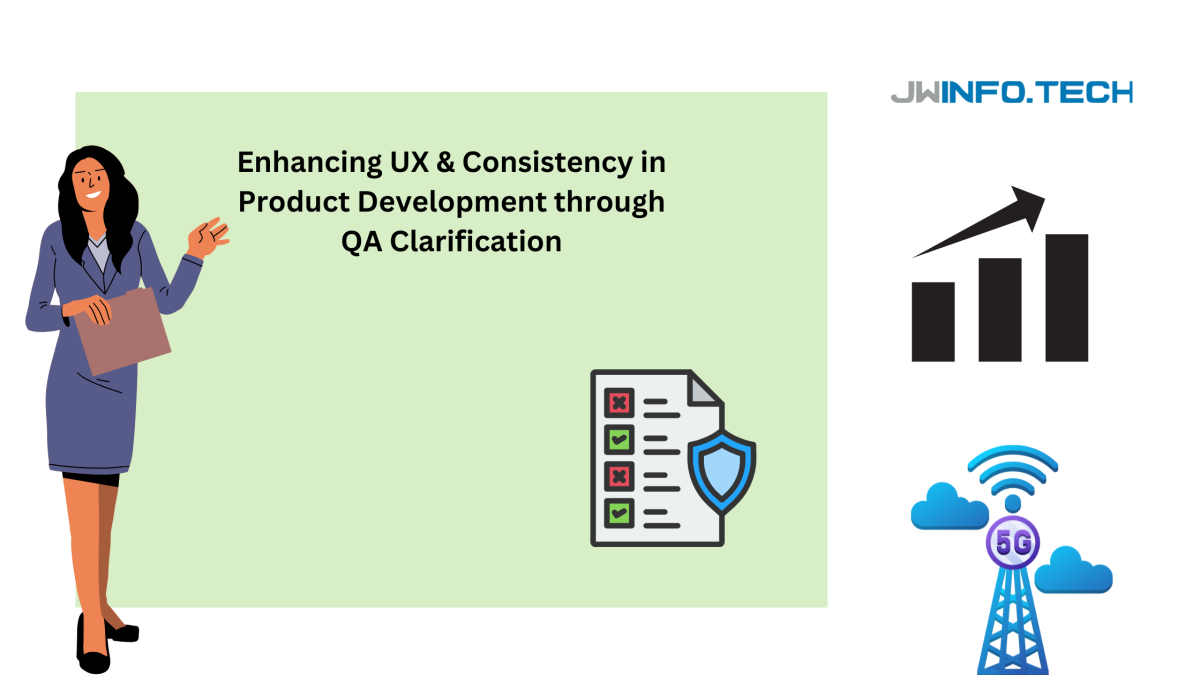Case Study: Enhancing UX & Consistency in Product Development through QA Clarification

Case Study: Enhancing Public Safety with AI-Powered Gun Detection System
March 26, 2025
🧾 Case Study: Automating Royalty Refunds in Hospitality CRM Using RPA
April 9, 2025- bug tracking
- Figma design review
- localization testing
- navigation enhancements
- password validation
- QA best practices
- QA-driven design validation
- search functionality optimization
- software quality assurance
- software testing
- SRS validation
- terminology consistency
- UI standardization
- UI/UX consistency
- usability testing
Client Overview
A growing telecom solutions provider was in the process of refining its digital onboarding and payment systems for eSIM activation and top-ups. To ensure seamless user experience (UX), consistency, and clarity, the client needed a QA-driven design validation process that aligned both Figma designs and the Software Requirements Specification (SRS) before moving into development.
The challenge was to eliminate ambiguities, enforce consistency, and improve UI/UX standards to create a more streamlined digital experience.
Challenges Identified
🔹 Terminology Inconsistencies – Multiple variations of key terms like “eSIM” vs. “E-Sim” and “Top-Up” vs. “Top-up” appeared across the design and documentation.
🔹 Password Strength Validation – Unclear rules on how password validation messages should appear, leading to possible user confusion.
🔹 Field & Label Standardization – Variations in email input fields, navigation menu options, and form labels caused usability challenges.
🔹 Navigation & Menu Behavior – Certain menu items did not align with navigation expectations, requiring restructuring.
🔹 Search & Validation Rules – The need to refine search logic to ensure better accuracy when users search for information.
JW Infotech’s Approach
To bridge the gap between design intent and functional accuracy, JW Infotech’s QA team conducted a comprehensive review of the Figma design and SRS (V1.4), ensuring:
1. Standardizing UI/UX Elements Across Screens
✅ Ensured consistent terminology across the platform:
- “eSIM” (instead of “E-Sim”)
- “Top-Up” (instead of “Top-up”)
- “Sign Up with Google” (instead of “Sign Up with your Gmail Account”)
✅ Maintained uniform text case rules:
- “Log In” (instead of “Login”)
- “Log Out” (instead of “Logout”)
- “Receiver’s Details” (instead of “Receiver Details”)
✅ Date format correction: Updated all dates to dd/MM/yyyy format for global consistency.
2. Refining Button & Label Naming Conventions
✅ Implemented Upper Camel Case for buttons and labels, ensuring all CTAs were intuitive and followed best UX practices.
✅ Fixed button inconsistencies like:
- “Login to Admin Portal” → “Log In to Admin Portal”
- “Proceed to Login” → “Proceed to Log In”
- “See More Information and Buy Now” → Consolidated into a single action button.
3. Improving Password & Character Validation
✅ Password field updates:
- Minimum password length changed from 6 to 8 characters.
- Ensured the password strength indicator highlights lowercase characters correctly.
✅ Expanded name field validation: - Allowed special characters like hyphen, apostrophe, and dots in first and last names.
4. Search & Navigation Enhancements
✅ Search Functionality Optimization:
- Implemented a “contains” condition instead of “starts with”, allowing users to find results with partial inputs of at least two characters.
✅ Navigation Clarity: - Ensured non-related secondary menu items are not highlighted for better usability.
5. Refining Network Management & Timer Displays
✅ Updated Network Operator Management section to “Network Provider Details” (aligned with SRS V1.4).
✅ Adjusted countdown displays to show only seconds (e.g., “120S remaining”) for better readability.
Results & Impact
🚀 Enhanced UX Consistency – Eliminated ambiguous terms and ensured all elements followed the same text format.
🚀 Improved Usability & Navigation – Standardized button names, menu behavior, and input fields to enhance user experience.
🚀 Better Search Accuracy – Implemented “contains” logic for search results, improving content discoverability.
🚀 Optimized Validation & Error Messaging – Provided clear, user-friendly validation messages for form fields and security inputs.
Conclusion
By implementing a QA-driven design validation approach, JW Infotech ensured that the client’s Figma design and SRS were fully aligned before moving into development. This eliminated inconsistencies early in the product lifecycle, reduced rework costs, and enhanced end-user experience.
🔎 Looking for QA expertise to refine your UI/UX and standardize software development processes? Let’s talk! 🚀
#SoftwareTesting #QAValidation #UIUXDesign #Figma #SoftwareDevelopment #UsabilityTesting #ProductDesign #JWInfotech



